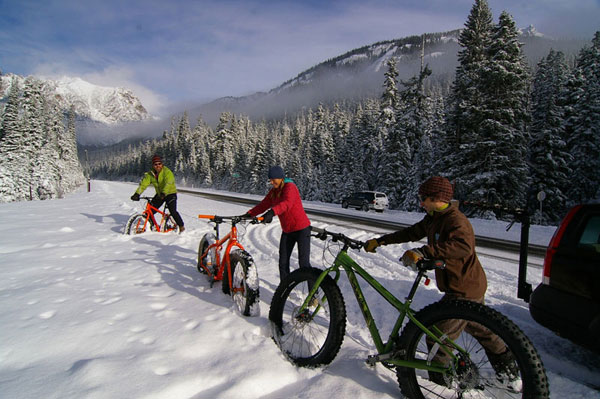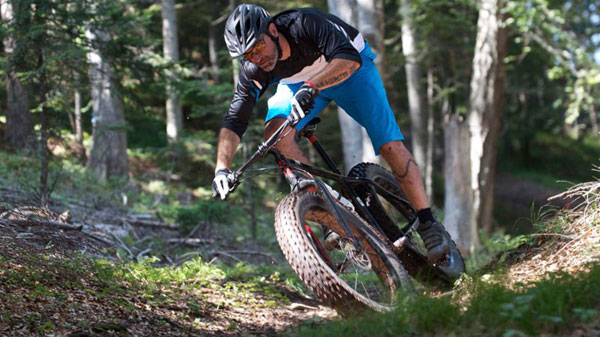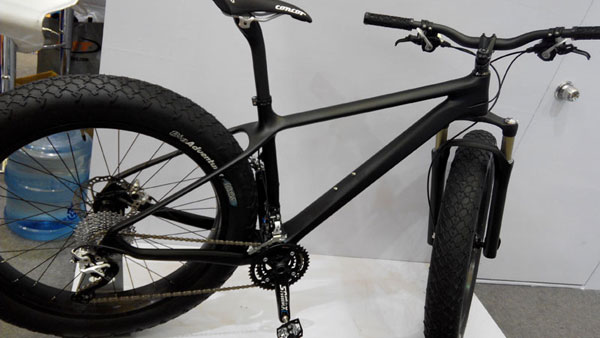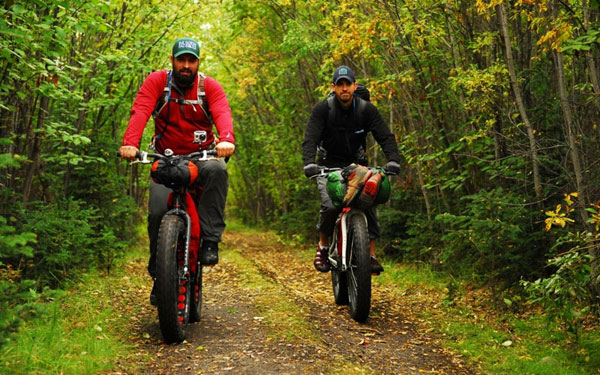Taking A Look At “Fat Bikes” |
13-May-2014 |

So, Just What Is A “Fat Bike”
Some folks would argue that due to the ISO bead diameter of the fat bike’s tires being the same as 26″ mountain bikes, the fat bikes are not 29″ers, but using that logic, road racing bikes would then be 29″ers too. So, as you can see, a fat bike has a good reason to be thought of as a 29″er in reality.

Another way fat bikes are like 29″ers is that they have evolved to needing proprietary frames and forks, much like 29″ers. While some 26 inch bikes can be shoehorned with big, 3″ wide rubber, those same bikes can not handle today’s nearly 4″ wide tires on 100mm wide rims! Nope, only the proper frame and fork will do now. One final thing that bonds fat bikes to 29″ers is that “normal” 29″er wheels and tires can be swapped into a fat bike frame for summertime riding, if you want to. Many fat bike riders just ride their enormous tires all year long though.

The King Of All Terrain Bikes?
Back in the early days of modern mountain biking, the term “mountain bike” was actually a company name. Many early fat tired bikes were called “all terrain bikes”, or “ATB” bikes. (In fact, since most off road bikes are not actually ridden on mountains, “all terrain bikes” makes more sense, but…) If any bike can lay claim to being “all terrain”, the fat bike is that animal. These bikes, designed originally for tackling the Alaskan ultra-endurance races on snow, were found to excel on all sorts of terrain, and many places a regular mountain bike can not be ridden easily, a fat bike can ride comfortably through. All terrain indeed!

Personally, a fat bike has always had an attraction for me. I knew that at some point I would get one, and I finally purchased my fat bike recently, just to satisfy my curiosity about the genre. I’ll be giving it a go here in all sorts of riding situations- not just snow and sand- to see if this is truly the “King Of All Terrain Bikes“.
